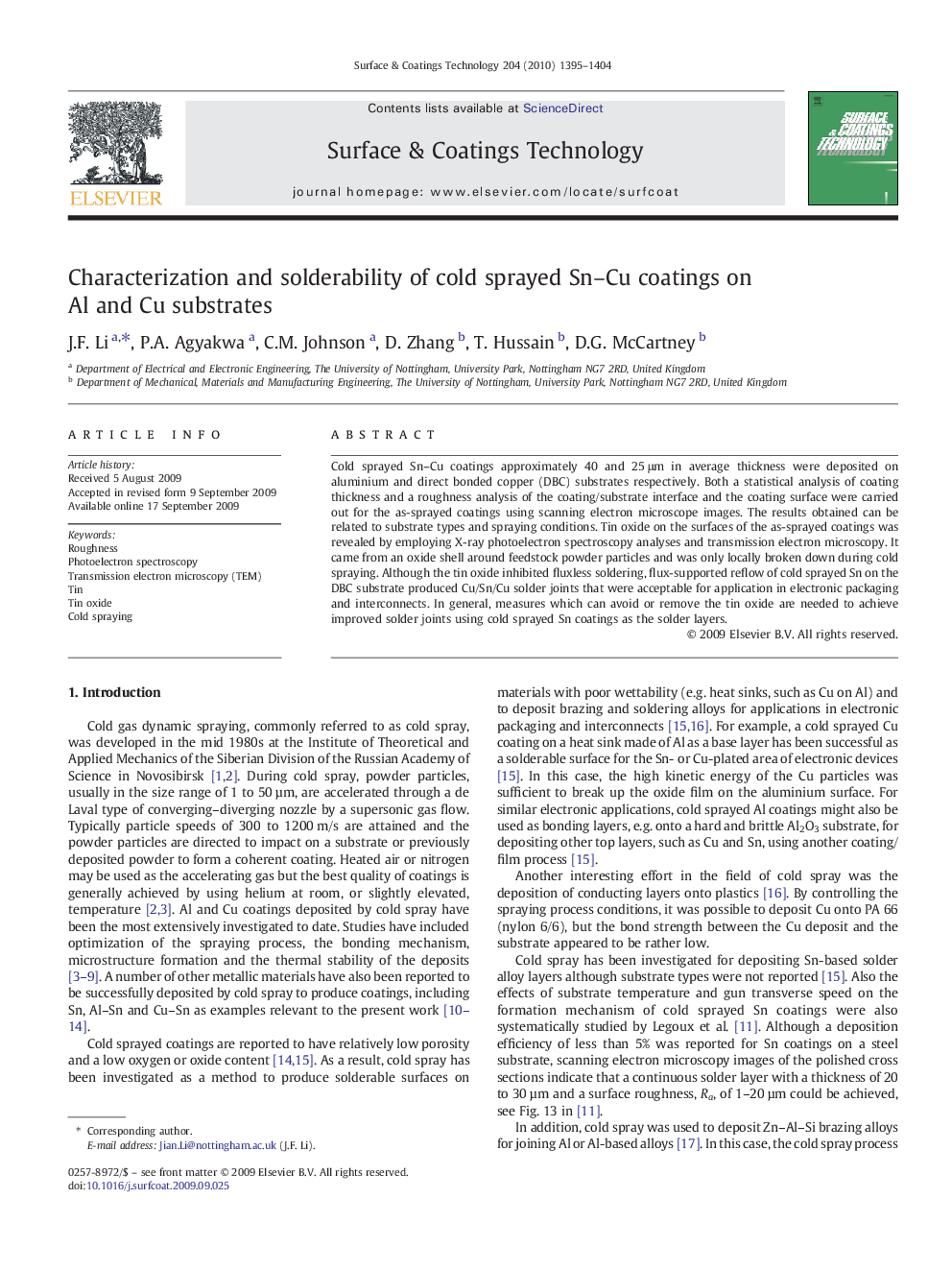| Article ID | Journal | Published Year | Pages | File Type |
|---|---|---|---|---|
| 1659734 | Surface and Coatings Technology | 2010 | 10 Pages |
Cold sprayed Sn–Cu coatings approximately 40 and 25 μm in average thickness were deposited on aluminium and direct bonded copper (DBC) substrates respectively. Both a statistical analysis of coating thickness and a roughness analysis of the coating/substrate interface and the coating surface were carried out for the as-sprayed coatings using scanning electron microscope images. The results obtained can be related to substrate types and spraying conditions. Tin oxide on the surfaces of the as-sprayed coatings was revealed by employing X-ray photoelectron spectroscopy analyses and transmission electron microscopy. It came from an oxide shell around feedstock powder particles and was only locally broken down during cold spraying. Although the tin oxide inhibited fluxless soldering, flux-supported reflow of cold sprayed Sn on the DBC substrate produced Cu/Sn/Cu solder joints that were acceptable for application in electronic packaging and interconnects. In general, measures which can avoid or remove the tin oxide are needed to achieve improved solder joints using cold sprayed Sn coatings as the solder layers.
